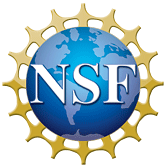Jobs:Job-01879: Difference between revisions
Created page with "{{CSDMS job details template |JOB title=12 PhD Funded RAships at UAF CFOS for NSF GRFP Honorable Mention |JOB position=PhD students |JOB CSDMS yes no=No |JOB university=University of Alaska Fairbanks |State member=Alaska |MOI meeting country=United States |JOB application_deadline=2026-01-15 |JOB begin review process=No |Working group member=Coastal Working Group |JOB bodytext=We’re recruiting 12 PhD students at the University of Alaska Fairbanks (UAF) College of Fishe..." |
(No difference)
|
Latest revision as of 05:20, 2 September 2025
Apply before: 15 January 2026
|
Posting:
Position: PhD students
Apply before: 15 January 2026
|
Program Website: https://www.uaf.edu/cfos/academics/emerge-alaska/index.php
I am hoping to recruit one student to join my lab group, the COASTal Dynamics Lab (Cryosphere, Ocean, and STream Lab), which researches ocean, land, and ice interactions by focusing on river-marine transitions, shelf circulation, and the role of human impacts. By differentiating effects of climate change, natural variability, and the built environment in high latitudes, our research advances our scientific understanding of flood risks, global warming impacts, and predicting environmental change. We work with and equip indigenous/local communities to steward their own lands and seas. The COASTal Dynamics Lab is in the College of Fisheries and Ocean Sciences and a part of the UAF Sea Ice Group. The lab is led by Dr. Steven Dykstra and currently has 2 PhD students and 2 MS students. We have our own lab space in Fairbanks, AK with multiple shared spaces on campus and throughout the state. We are currently working on the following projects:
- ISOPS: The role of ocean circulation and dynamics on freeze-up ice/beach processes and the drivers of landfast ice stability/destabilization. Collaborative team with several other associated projects focused on the Chukchi Shelf and beach near Utqiaġvik, AK.
- Ice-Tide RECON: Part 1: The role of ice on tidal dynamics in resonant and convergent estuaries/basins. Part 2: The role of vertical land motion during the 1964 Great Alaska Earthquake on Cook Inlet tides
- The role of tide-river interactions on channel morphodynamics and backwater effects in America’s longest tidal river (Kuskowkim River)
- Alaska Coastal Mapping Center of Excellence: topobathy LiDAR acquisition and associated research support (e.g., turbidity), development of authoritative data products/tools, and the dissemination of data with stakeholder trainings
- Hazard resiliency as America expands its Arctic access port (Nome, Alaska), specifically: beach stability and tidal river flooding and erosion
If you received Honorable Mention on your GRFP and are interested joining us at UAF, please reach out to myself or one of the other potential mentors listed on the program webpage.
Cheers!
Steve
Steven L. Dykstra, PhD
Assistant Professor; Oceanography Dept.; College of Fisheries and Ocean Sciences; University of Alaska Fairbanks; O’Neil 123
